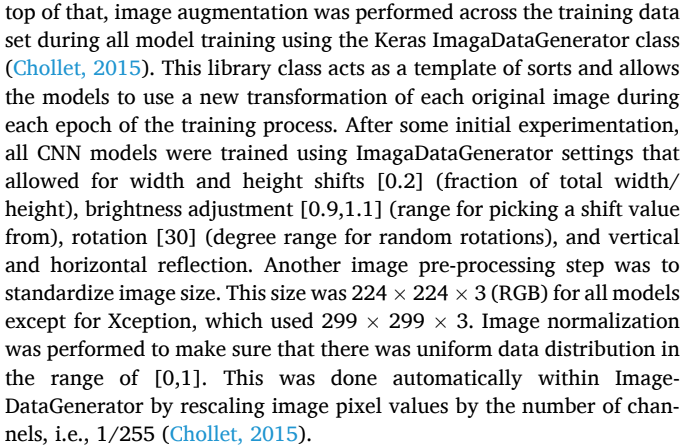Hello!
I am trying to reproduce the result of this study. To be specific, I want to finetune DenseNet201 using the architecture and hyperparameters set in the paper.
To achieve this, I have this PyTorch code:
# Setup pretrained model with ImageNet's pretrained weights
weights = torchvision.models.DenseNet201_Weights.DEFAULT
densenet_model = torchvision.models.densenet201(weights=weights).to(device)
# Get the length of class_names (one output unit for each class)
output_shape = len(class_names)
# Modify the classifier
densenet_model.classifier = nn.Sequential(
nn.Linear(in_features=1920, out_features=128, bias=True),
nn.ReLU(inplace=True),
nn.Dropout(p=0.2),
nn.Linear(in_features=128, out_features=64, bias=True),
nn.ReLU(inplace=True),
nn.Dropout(p=0.3),
nn.Linear(in_features=64, out_features=output_shape, bias=True) # Number of output classes
)
# Redefine the forward pass
class CustomDenseNet201(nn.Module):
def __init__(self, base_model):
super(CustomDenseNet201, self).__init__()
self.features = base_model.features
self.pool = nn.AdaptiveAvgPool2d((1, 1))
self.flatten = nn.Flatten()
self.classifier = base_model.classifier
def forward(self, x):
x = self.features(x)
x = self.pool(x)
x = self.flatten(x)
x = self.classifier(x)
return x
# Instantiate the custom model
model = CustomDenseNet201(densenet_model)
# Move the entire model to the device
model = model.to(device)
However, the model is not learning anything (val acc: 0.15 avg). To confirm that the result is reproducible, I used a fraction of the dataset in TensorFlow and the accuracy (0.7 avg) showed that it’s learning.
# Setup pretrained model with ImageNet's pretrained weights
base_model = applications.DenseNet201(weights='imagenet', include_top=False, input_shape=(224, 224, 3))
model = models.Sequential([
base_model,
layers.GlobalAveragePooling2D(),
layers.Dense(128, activation='relu'),
layers.Dropout(0.2),
layers.Dense(64, activation='relu'),
layers.Dropout(0.3),
layers.Dense(num_classes, activation='softmax')
])
I’m sure that I am missing something or doing something wrong.

